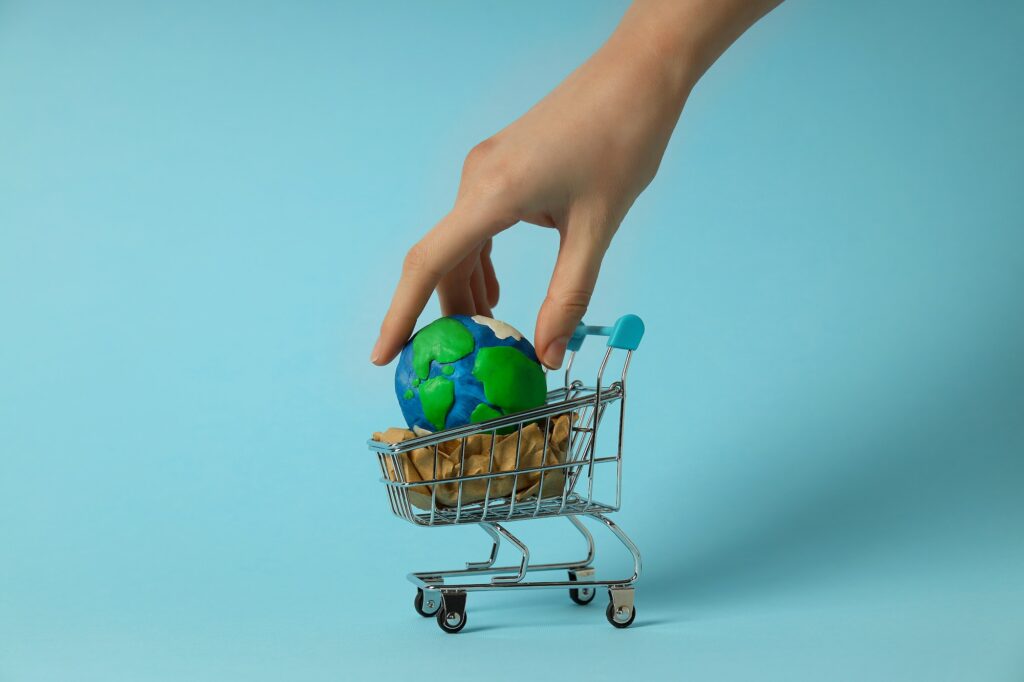5 Key Environmental Impacts of E-commerce

E-commerce has revolutionized the retail industry, providing convenience and a vast range of choices to consumers around the world. However, this digital shopping phenomenon has environmental implications that are becoming increasingly difficult to ignore. In this blog post, we will assess the environmental impact of e-commerce, specifically focusing on packaging waste, the carbon footprint of delivery services, and how companies are responding to reduce their impact.
E-commerce and Packaging Waste
The rapid growth of e-commerce has led to an increase in packaging waste. Every online order comes with layers of packaging – boxes, bubble wrap, plastic bags, foam peanuts, and more. While some of this material is recyclable, much of it ends up in landfills or the ocean, contributing to the growing global waste problem. The impact is profound, with packaging from e-commerce orders accounting for over 30% of solid waste generated in many developed countries.
Carbon Footprint of Delivery Services
The delivery of online orders is another environmental concern. Traditional retail shopping often involves consumers driving to a store, which has its carbon emissions. However, the emissions from delivering e-commerce orders can be even higher. Individual packages are often shipped directly from warehouses to consumers, frequently over long distances. This transportation leads to an increase in carbon emissions, contributing to air pollution and climate change.
Companies Taking Action
Aware of these issues, some e-commerce companies are taking steps to reduce their environmental impact. Amazon, the world’s largest online retailer, launched its “Climate Pledge” with the goal of becoming carbon neutral by 2040. The company is investing in renewable energy, electric delivery vehicles, and more sustainable packaging to achieve this target. Similarly, Etsy offsets 100% of the carbon emissions generated by shipping items sold on its platform.
Small Changes, Big Impact
Many smaller e-commerce companies are also making efforts to be more sustainable. Some are reducing their use of plastic and shifting to biodegradable or recyclable packaging. Others are consolidating shipments or using carbon-neutral delivery services to reduce their carbon footprint. These companies demonstrate that while the challenges are significant, even small changes can make a big difference.

Towards Sustainable E-commerce
Despite the environmental challenges, there’s potential for e-commerce to become more sustainable. Innovative solutions such as reusable packaging, local sourcing, and eco-friendly delivery options are being explored. Furthermore, using data and AI, companies can optimize logistics and inventory management, reducing overproduction and unnecessary transportation.
Consumer Power in E-commerce Sustainability
Consumers hold significant power in pushing for a more sustainable e-commerce environment. They can use their purchasing power to support businesses that prioritize environmentally-friendly practices. As consumers increasingly value sustainability, businesses that fail to take environmental concerns seriously may find themselves at a competitive disadvantage. Additionally, consumers can minimize their impact by choosing slower delivery options, which allow for more efficient shipping routes and less packaging.
Green Logistics
Green logistics is another area where e-commerce businesses can reduce their environmental impact. This involves streamlining the supply chain and distribution processes to minimize waste, reduce energy usage, and decrease emissions. Businesses can achieve this by optimizing delivery routes, using more efficient vehicles, or consolidating shipments to reduce the number of trips needed. There’s also an increasing trend of ‘urban warehousing,’ where businesses store goods in or near city centers to reduce the distance for last-mile deliveries.
Regulation and Policy
Government regulations and policies also play a crucial role in guiding the e-commerce sector towards more sustainable practices. Policies can incentivize or enforce the use of recyclable materials, the reduction of carbon emissions, and the adoption of green energy sources. The introduction of such regulations can accelerate the shift towards sustainability in the e-commerce sector.
The Role of Technology in Sustainable E-commerce
Technology has a crucial role to play in reducing the environmental impact of e-commerce. Advanced data analytics can help businesses optimize their supply chains, reducing unnecessary transportation and minimizing waste. AI-powered forecasting tools can help companies better predict demand, preventing overproduction and reducing resource use. Additionally, blockchain technology can increase supply chain transparency, helping businesses and consumers make more sustainable choices.
The Circular Economy and E-commerce
The concept of a circular economy, where resources are kept in use for as long as possible and waste is minimized, is increasingly relevant to e-commerce. Several online platforms are promoting circular economy principles by selling second-hand or refurbished goods. For instance, platforms like eBay, ThredUP, and The RealReal allow consumers to buy and sell used items, reducing the demand for new products and minimizing waste.

E-commerce has a significant impact on the environment, but it also presents opportunities to promote more sustainable consumption and business practices. Through concerted efforts by businesses, consumers, and governments, it’s possible to mitigate these impacts and steer the industry towards a more sustainable path. By fostering sustainable innovation, implementing green logistics, promoting the circular economy, and leveraging consumer power, we can enjoy the benefits of e-commerce while protecting our environment for future generations.


